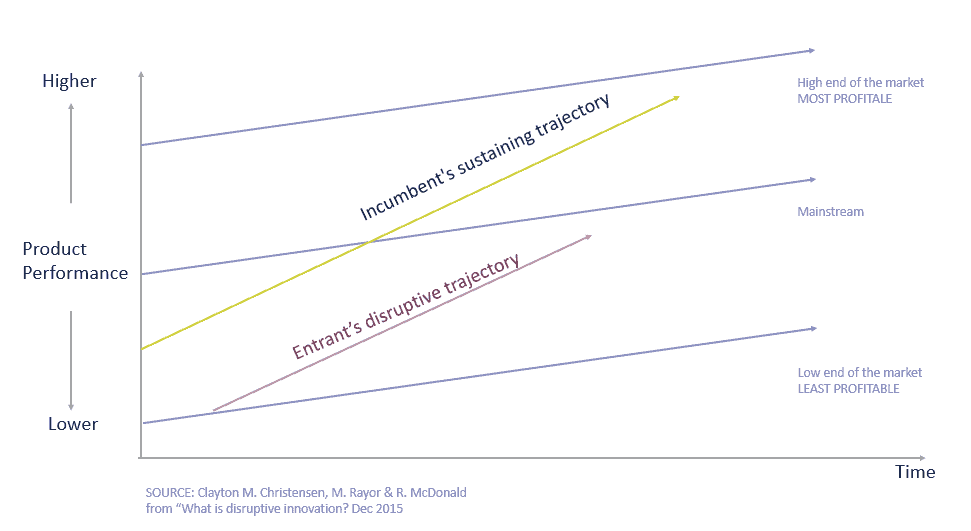These Are NOT Your True Competitors
Nov 11, 2022 • 6 min read
Being an early stage tech startup focused on improving the odds of success of other early stage tech startups puts us at Icanpreneur in a really unique position. In a typical week we get to talk with a lot of aspiring and early tech entrepreneurs and unlike any other participants in the entrepreneurial ecosystem, our focus is to not only spot the gaps in tech entrepreneurs’ knowledge, but also to understand them, understand their needs and pains, and do something about it. We are not like potential customers, investors or the media who will assess your startup in an effort to filter you in or out. We are more like medical doctors and when entrepreneurs come to us for help, they come and genuinely open themselves because we are in one and the same boat.
In this article we will focus on one of the most typical early-stage mistakes that we see - answering the question of who your true competitors are.
A Story About A Startup
Let’s use an imaginary startup that intends to build a human resources management system (HRMS) SaaS platform for small and medium companies. Looking at their pitch deck, on their market and market sizing slide, they mention the super big market that is worth billions of dollars that is expected to grow more than XX% in the next 2-3 years. On their slide they talk about their competitors where they mention companies like Workday, SAP SuccessFactors, Oracle, etc.
Let’s focus on one of these supposed competitors, for example Workday. Workday has more than 16500 employees, a revenue of around $4B and has a market capitalization of almost $40B. How can a newborn startup possibly compete with such a behemoth?
The short answer? It typically cannot. And it typically shouldn't. Until a much, much later stage. These huge companies can outperform you in almost any imaginable direction - features, branding, marketing, budget… everything. They are huge. You? You don’t exist… yet.
If they cannot be and shouldn’t be your competition this means that they aren’t your true competition.
“OK Vesko! You have my attention. If these are not my competitors, then who?”, you might be thinking. Glad you asked! To answer your question, we have to first clarify who your potential customers are.
Who Are Your True Potential Customers?
To answer this question, we will once again refer to the work of one of the brightest minds in the innovation theory ever lived - Prof. Clayton Christensen and his Disruptive Innovation Theory. Let’s look at the following diagram that plots a market.

On the x-axis we have Time. On the y-axis we have Product Performance. There are three parallel vectors that split the market in 3 different segments - low-end of the market, mainstream and high-end of the market. There are at least two interesting characteristics for each market segment - what is the product performance that the segment requires and how much they can pay. The theory shows that the lower-end of the market has smaller needs, has smaller budgets and is able to afford lower product performance. As a result, they are the least profitable of all customers. On the other end of the spectrum, the high-end of the market has the biggest customer needs, requires the biggest product performance and has the biggest budgets. As a result, they are the most profitable customers.
Every active company that is addressing a given market, improves their product performance over time which allows them to serve customers higher up in the market which leads to higher profits. In other words, each company over time naturally aims to go upmarket. Going upmarket means you increase your prices and gradually substitute customers at the lower end for the customers at higher end.
So Who Are Your True Potential Customers?
Initially, your product performance will start at levels close to zero (see the Entrant’s disruptive trajectory on the diagram). That means that you cannot effectively and successfully address the needs of neither the mainstream of the market, nor the high-end of the market. Your only chance is to try addressing the low-end of the market OR the non-consumption (companies or individuals that cannot afford or don’t have access to an adequate solution of their needs).
Going back to our example, with the HRMS, Workday and the rest of the big guys are NOT, cannot be and should not be your competitors. Their customers are not your customers, either and won’t be for a long time. When they become, gone will be the days where you will call your company a startup.
You should focus your effort and discover a set of potential customers at the low end of the market - companies that don’t need and/or cannot afford the complexity of the solutions that the big guys offer.
“OK Vesko! Makes sense. Who are my competitors then?”. Just read on!
Finally! Your True Competitors
To be able to find who your true competitors are, we should use another theory that has also been popularized and developed by Prof. Christensen - the jobs-to-be-done theory. We’ve already introduced it in our article on “How to Have Good Startup Ideas” (check it so that you can make full sense of what follows).
Let’s reiterate the primary concept of the theory. Everyday stuff happens to us. Jobs arise in our lives that we need to get done. Some jobs are little (“pass the time while waiting in line”), some are big (“find a more fulfilling career and become an entrepreneur”). Some surface unpredictably (“how to unlock my car when I lose my keys”), some regularly (“take notes while in a meeting”). When we realize we have a job to do, we “look around”, reach out to pull something into our lives and “hire it” to get the job done. We actually hire products to do things for us!
In order to understand your true competition, once you have identified your low-end of the market OR non-consumption market segment, you have to explore and understand the specific jobs-to-be-done/underserved needs within your problem space and figure out how these potential customers are addressing these needs today. The HRMS SaaS startup might be surprised to learn that these companies are using a combination of spreadsheets, custom no-code softwares and probably a bunch of manual labor work to fulfill these needs today. And this is your true competition. These are the solutions that you have to outperform and focus on initially.
One More Thing
At Icanpreneur we believe that the #1 reason startups fail 9 out of 10 times is simply because the typical entrepreneurial path is chaotic and is based primarily on gut feeling and luck. We believe that entrepreneurs should use their intuition and gut feeling to imagine the vision of the intended impact of their startup instead of discovering what the entrepreneurship steps are. This is where we can help - at Icanpreneur we are focused on building the guided journey that helps aspiring and early entrepreneurs systematically go from idea, through investment, to product/market fit. Become part of the change now.
Author
Founder & CEO of Icanpreneur. Passionate about connecting people with their purpose of becoming successful entrepreneurs.
